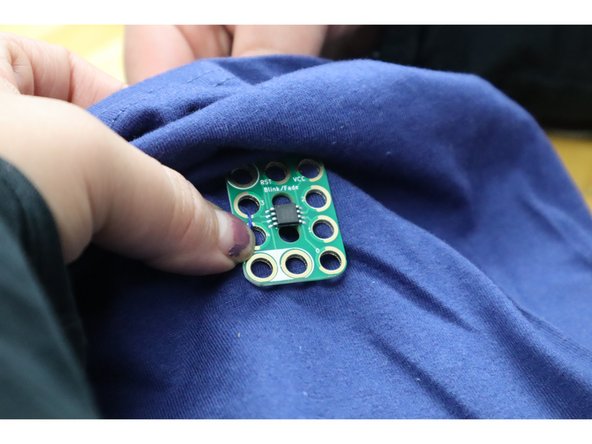Introduction
We created a fun, animated, holiday shirt using some LEDs and a Blink/Fade Board. You can easily make one yourself if you follow our diagram and tips!
Video Overview
Featured Document
-
-
Follow the diagram and lay out your parts.
-
It'll help if you visualize where the thread is going and how everything will interact.
-
It's most certainly possible to use more or less LEDs for this project.
-
-
-
Use regular, non-conductive, thread to sew down your parts.
-
Each LED has four holes, two for positive and two for negative. We really only need to use one of each for this project. Decide which ones you're going to use, and then use the two you're NOT using to secure the parts in place.
-
-
-
Before connecting the LEDs, first connect the Blink/ Fade board to the Screw Terminal.
-
For some people it helps to test each LED as you go long to make sure you thread is making the right connections. Use an alligator clip to complete the circuits as you go along.
-
-
-
Connecting all the LEDs is really time intensive. Take your time. Test often. Everything can be fixed if there's a problem.
-
As you make each connection be sure that you're watching for random loose threads. These can be a major source of short circuits. Use fabric glue or tape to help keep all the loose ends from getting out of control on the backside.
-
It's totally possible, but not recommended, to use one VERY long line of thread for each pin connection. This removes the need to tie off thread at each LED over and over again.
-
To make life easier you can do very big stitches and later go over them with a regular thread in a zig zag pattern on a sewing machine. Though in this situation that would probably ruin the printing on the front.
-
-
-
If something isn't working it's probably from a random loose thread causing a short. Secure with glue or tape.
-
Sew a small pocket onto the side of your shirt for an easy battery holder... holder.
-
Cancel: I did not complete this guide.
One other person completed this guide.











